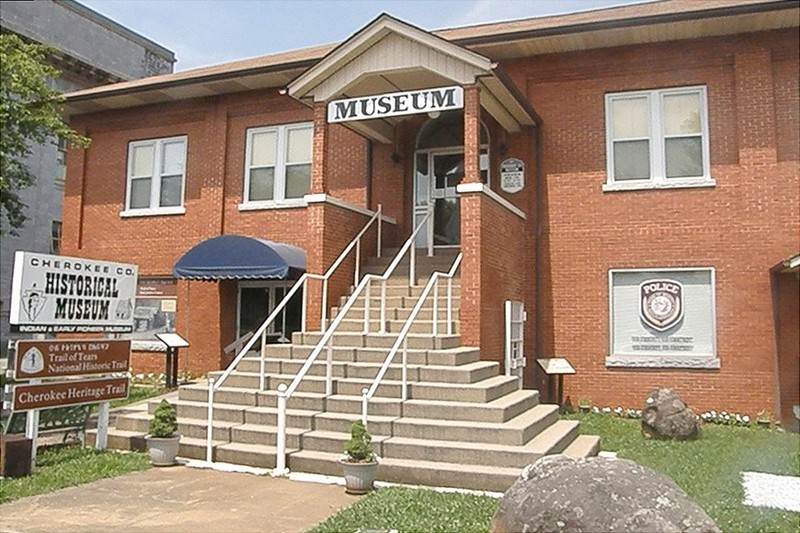Cherokee County Historical Museum
Introduction
Text-to-speech Audio
The Cherokee County Historical Museum is located next to the county courthouse and features exhibits on local history, Cherokee history and culture (before the tribe was forced to move to Oklahoma on the "Trail of Tears"), and local geology. There is also a large collection of over 700 dolls—the oldest of which dates to 1865—depicting many famous people such as Fred Astaire, Elvis Presley and Princess Diana. The museum is part of the Trail of Tears National Historic Trail.
Images
The Cherokee Historical Museum

Backstory and Context
Text-to-speech Audio
The Cherokee County Historical Museum is dedicated to preserving and displaying the history of both Native American and pioneer settlers in the western region of North Carolina. Located in a historic Carnegie Library, the museum houses over 2000 Cherokee artifacts obtained by local resident Arthur Palmer over a fifty year period. Additionally, local resident Louise Kilgore donated over 700 collectible dolls to the museum, giving the museum a wide range of historical artifacts to display.
The museum contains 40 panels that illustrate local Cherokee history through photographs and drawings. This allows visitors to connect to the history of the area through visual depictions. In addition to the Cherokee history on display, the museum contains artifacts from early pioneer settlers. Many hand-made household items and farming tools are displayed, maintaining the history of some of the earliest settlers in the area.
The Cherokee County Historical Museum is part of the Trail of Tears National Historic Trail. This trail commemorates the Cherokee and other tribes who were forced to move to Oklahoma on the Trail of Tears. The museum houses a replica of the houses Cherokee residents used before their removal, log cabins that were typically used by settlers after the Cherokee were removed.
The museum contains 40 panels that illustrate local Cherokee history through photographs and drawings. This allows visitors to connect to the history of the area through visual depictions. In addition to the Cherokee history on display, the museum contains artifacts from early pioneer settlers. Many hand-made household items and farming tools are displayed, maintaining the history of some of the earliest settlers in the area.
The Cherokee County Historical Museum is part of the Trail of Tears National Historic Trail. This trail commemorates the Cherokee and other tribes who were forced to move to Oklahoma on the Trail of Tears. The museum houses a replica of the houses Cherokee residents used before their removal, log cabins that were typically used by settlers after the Cherokee were removed.
Sources
1. http://www.cherokeecounty-nc.gov/index.aspx?page=116
2. Cherokee County Historical Museum. Blue Ridge Heritage. Accessed May 28, 2019. https://www.blueridgeheritage.com/destinations/cherokee-county-historical-museum/.
3. Trail of Tears. National Park Service. Accessed May 28, 2019. https://www.nps.gov/trte/learn/historyculture/index.htm.
2. Cherokee County Historical Museum. Blue Ridge Heritage. Accessed May 28, 2019. https://www.blueridgeheritage.com/destinations/cherokee-county-historical-museum/.
3. Trail of Tears. National Park Service. Accessed May 28, 2019. https://www.nps.gov/trte/learn/historyculture/index.htm.
